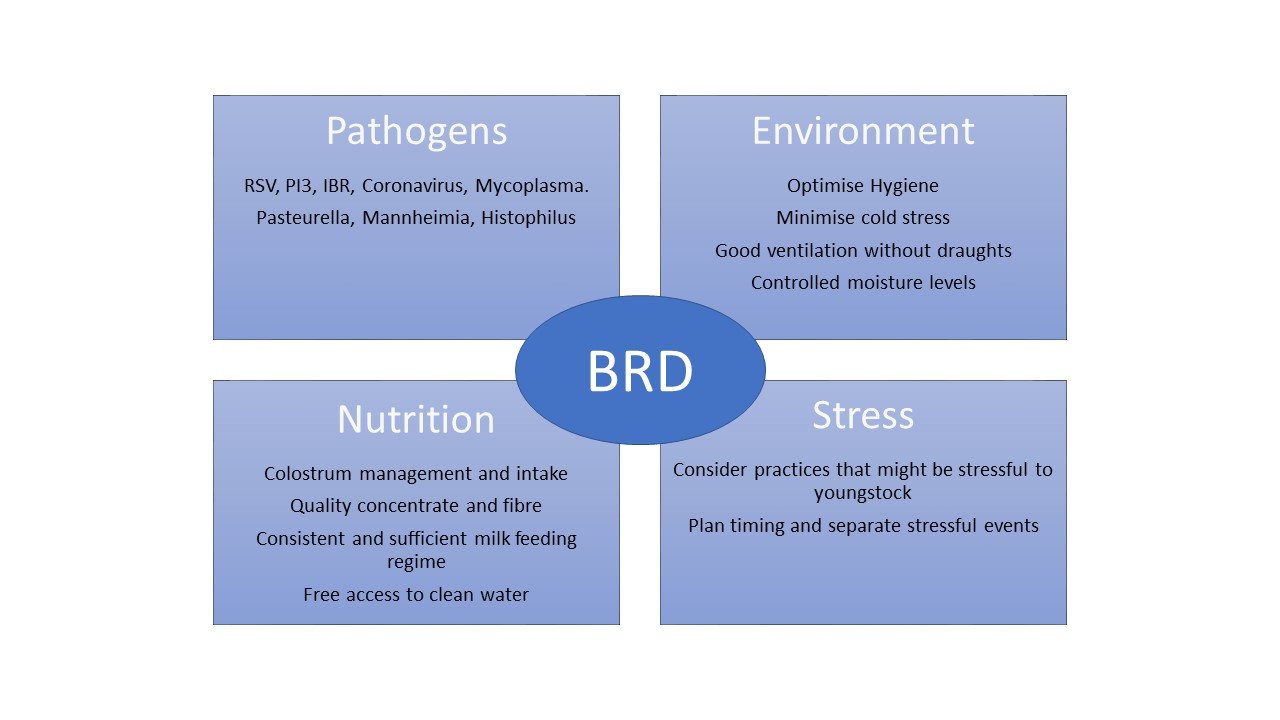Coronavirus – An important pathogen in bovine respiratory disease
Article written by Paul Burr, Biobest Laboratories
Bovine Respiratory Disease (BRD) is responsible for substantial welfare and economic costs to both the beef and dairy sectors of farming worldwide. The costs of each outbreak include deaths, medicines, extra labour on farm and veterinary input, plus the impact on liveweight gain and feed conversion efficiency from irreversible lung damage. BRD has long been recognised as a multifactorial disease, with multiple causative agents and management factors involved in outbreaks (see image).

Bovine Coronavirus (BCoV) has generally not been considered a significant contributing pathogen in the BRD complex in the UK despite a growing body of evidence worldwide demonstrating both its presence and clinical importance in the syndrome. Based on the evidence (outlined below), it’s an area for further consideration when it comes to BRD outbreaks on farm.
BCoV is a common virus that infects the respiratory tract and intestines of cattle. The same virus strains are associated with calf diarrhoea, winter dysentery in adults, and pneumonia. Thankfully, genetic changes like those seen in pig respiratory coronavirus do not seem to occur with BCoV strains.
What evidence is there for BCoV's growing role as a primary pathogen in BRD?
- BCoV was identified in pneumonia outbreaks back in the 1980s and linked to mild respiratory signs when injected into calves.
- With PCR testing, BCoV is now frequently detected in the damaged lung tissue of cattle with pneumonia, usually along with other viruses and bacteria.
- Recent surveys found BCoV in 22.9% of Irish and 39% of UK respiratory samples, making it the most prevalent virus detected (Biobest in association with MSD and University of Glasgow)
- BCoV often precedes secondary bacterial pneumonia infections caused by Mannheimia, Pasteurella and Histophilus species.
- Experimental BCoV inoculation causes cough, depression, fever, and lung lesions typical of BRD.
BCoV infection is common year-round but peaks in winter. It persists in the environment and spreads via fomites. Extended viral shedding enables intra-herd transmission between animal groups.
The train of thought is now that BCoV precedes wider BRD infections, so how can we control it better?
- Enhance biosecurity between herds and within groups.
- Improve calf environment and colostrum intake.
- Recognize BCoV's tendency for prolonged shedding and transmission between ages of cattle.
- Include BCoV when investigating BRD outbreaks to inform treatment and future prevention.
- Consider vaccination possibilities – no vaccine currently licensed for the UK, however this may be coming soon. A new live intra-nasal BCoV vaccine which has been proven to reduce shedding, clinical signs and lung lesions caused by BCoV and can be used concurrently with existing RSV/PI3 vaccines is expected to be available in the UK in Winter 2023 (van Rooij et al 2023).
In conclusion, bovine coronavirus is an important but under-recognized contributor to costly BRD outbreaks in cattle. Increased awareness and testing for BCoV as a primary respiratory pathogen, plus updated biosecurity and vaccination approaches, will be key to controlling BRD impact and improving cattle health and performance.
- 1st January 2024
